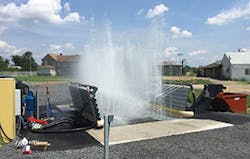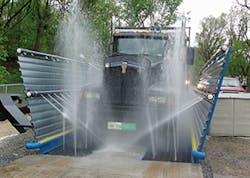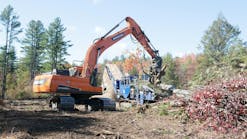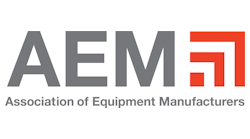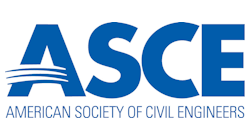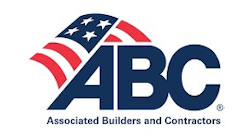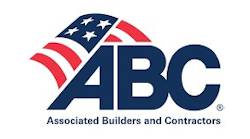Wheel wash systems are often one of the least recognized landfill structures for ensuring safety, health, and environmental protection. But they are far from being the least important—not that any landfill protective system is unimportant. For a minor capital investment and minimal operating costs, landfill owners and operators can achieve high standards of site cleanliness and public acceptance. The types and configurations of wheel wash systems are surprisingly diverse. They can range from simple ponds of water or rumble strips to active systems employing high-pressure water jets and elaborate water recycling and filtration systems. Given the wide variety to choose from, the landfill operator must size the wheel wash system to meet anticipated truck traffic while minimizing truck queues and achieving necessary standards of cleanliness. This can require customization for specific types of operations and projects, and modern wheel wash systems meet this challenge with the help of manufacturers continuously improving their product and its capabilities.
The Need for Wheel Wash Systems
Begin with simple aesthetics. As good neighbors, landfill operators strive to minimize, if not eliminate, nuisances that can affect adjacent properties or passersby. Landfill nuisances include odors, noise, dust, and blown debris. None of these by themselves make for an immediate and severe threat to human health or the environment (though over time, they certainly represent a chronic threat). But they do make living or working next to a landfill a singularly unpleasant experience if left unchecked.
So landfill operators adopt various strategies to minimize nuisances. To minimize odors, they use daily cover to encapsulate waste, or even spray perfumes to mask them. To minimize dust, they water down access roads and work surfaces. To minimize and capture blown debris, they erect tall mesh fences downwind of the current work face. And to prevent mud and residual scraps of waste from being deposited on road surfaces, landfill operators utilize wheel wash systems.
Then, there are safety concerns. Mud on the roadway, wet or dry, represents a significant driving hazard. In both cases, mud reduces the coefficient of friction between tires and the road surface, which can cause cars and trucks to skid out of control. If accidents caused by the slick, mud-stricken roads do occur, the landfill operators bear the liability. If the State or local government fails to prevent mud from being dragged offsite, the government can also share liability. It is a matter of meeting roadway safety standards.
To prevent being held liable, the State’s Department of Transportation (DOT) or the local county engineer’s office may issue permits for the site itself, pass local ordinances, and publish regulations, in addition to the operating permit issued by the State environmental regulatory agency. These additional requirements have two goals: see that the roadways and roadsides are properly maintained in a manner consistent with the engineering design and safety standards to ensure that efficient and safe traffic flow is not disrupted, and to identify and correct any hazards (such as a muddy surface) as soon as possible. Even though service roadways and access roadways onsite are located within private property, and are therefore not part of the local road system, it is often within the County’s or State’s right to regulate these surfaces as well, since they can be the source of mud on adjacent roadways. The government’s first concern is for the safety of the driving public. So, keeping mud off of the roadway is not just a good idea, it is the law.
And it is not just the public that is threatened by roadway mud hazards; the site equipment operators and support personnel are also at risk. These roads are used by both office staff looking for a place to park their cars, and by equipment operators moving their iron across the site. Even waste-hauling trucks—the main contributor of roadway mud—are vulnerable to the safety impacts of slick, muddy roads. Activity on a landfill can make the whole site muddy—and activity is not just limited to the working face. Trucks haul waste onto the site and haul cover soil from offsite sources or onsite borrow pits. After even a moderate rainstorm, vehicle and equipment movement can churn up mud for days. Mud can cake onto tires and undercarriages, as well. So, the term “wheel wash” is something of a misnomer. A thorough wash system takes care of the vehicle under-body as well, removing mud from both locations.
The Wheel Wash as Part of the Overall Sedimentation and Erosion Control System
A wheel wash—one of several systems specifically designed to minimize and eliminate a particular nuisance and possible threat to human health and the environment—is also a significant part of a landfill’s sedimentation and erosion control system. Operators normally think of this as being a series of permanent and temporary structures designed to prevent eroded sediment from being carried offsite by surface water runoff.
These can consist of straw-filled wattles, geotextile silt curtain fences, rock pile check dames, detention and retention basins, riser pipe discharge structures, and temporary seeding covers. The wheel wash system is the site’s last line of defense against escaping sedimentation. All of these constitute what is referred to as best available technology (BAT).
In addition to technological solutions, sediment and erosion control also includes operational procedures referred to as best management practices (BMP). These include daily (even twice a day) manual inspections of every linear foot of onsite roadways and the gate exit facility. Inspections are not just performed to determine the locations of mud on the roadways, but to also ascertain the current integrity of the BAT structures. Mud spills are to be cleaned up, and deficient BAT structures are to be repaired or replaced. These inspections should bring the inspector to egress points, cross-sections, and exit gates where truck traffic is funneled as it leaves the site. These points should be stabilized by high-integrity surfaces such as concrete or asphalt paving, or by a sufficiently thick layer of aggregate underlain with a sturdy, non-woven geotextile to prevent it from intermixing with underlying soils.
Cleaning operations should be thorough and carried out at least at one of these key inspection points, as well as hauling roads used to carry dirt and hauling roads used to carry waste. Sweeping should be done by sweepers equipped with vacuum or mechanical collectors, instead of just pushing the accumulated piles of mud and sediment to one side with a mechanical broom. Indirect operational aide in reducing the need for inspection and cleanup is achieved by limiting site access to few (or preferably one) entrance points. The goal is to contain all sediment and mud onsite, preventing its escape to neighboring manmade drains and natural bodies of water.
The use of water trucks must be properly coordinated with roadway inspection and cleanup operations. This task is essential for minimizing dust formation resulting from truck and vehicle movements during dry spells by wetting down the loose particles on roadway surfaces. This is not considered to be sediment since it is rarely mobile and is generated by clean (if not potable) water. Therefore, past practices of spraying oils or even leachate extracted from disposal cells to suppress dust have been discontinued.
Sizing, Locating, and Installing the Wheel Wash System
In this context, a wheel wash system may be considered a form of pavement stabilization. It is best to locate these systems at one or more of the key points. At these points, the wheel wash is directly incorporated into the stabilized surface. Chemical soil stabilizers and binding agents can also be used. This is usually located somewhere near the site exit(s), but not specifically at the exit gate itself, as this can lead to truck queues interfering with normal traffic flows.
A simple wheel wash facility can be constructed from recycled materials and natural aggregates. Once the location has been chosen, it should be graded and leveled with a diversion channel that will carry runoff from cleanup sprays to an adjacent collection basin. A sturdy (minimum 6 ounces per square yard), non-woven geotextile should be installed on the smooth surface to separate the underlying soils. Then, a minimum 8-inch-thick layer of coarse aggregate or a 12-inch-thick layer of recycled crushed concrete (larger than 40 millimeters in diameter) should be installed. Then, install a wash rack constructed of welded steel bars large enough and heavy enough for anticipated vehicle traffic. This can also be made from recycled materials such as salvaged metal mean guardrails. Lastly, install a manual power hose hookup to connect the cleanout spray to a water source to allow for manual clean out of the tires and underbody.
There are four basic methods for applying cleaning water to a truck: a flooded basin that the trucks drive through (often also equipped with rumble strips), a flowing countercurrent channel where water flows past submerged tires, low-pressure sprays with high volumes of water flows that inundate the tires, and high-pressure, low-volume water spray jets that use impact to dislodge accumulated dirt.
Trackout Control’s Grizzly Rumble Grate
Types of Wheel Wash Systems
There are two broad categories of active wheel wash systems: roller systems and drive-through systems. When using a roller unit, the truck leaving the landfill parks itself on each set of rollers as it exits the site, and is put into neutral. As the wheels of each axle are rotated by the spinning roller sets, water is sprayed from preset locations to thoroughly clean mud flaps, bumpers, underbodies, wheel wells, and tires.
A drive-through system does not require the truck to stop to be cleaned. Trucks entering a drive-through unit continue slowly (at 5 miles per hour) until exiting the facility. As the slow-moving truck advances, it passes magnetic and photo sensors that send a signal to the control panel to begin the cleaning process. Pre-positioned water nozzles spray the vehicle’s tires, wheel wells, and mud flaps. The unit comes with angle iron grids that serve to open up the tire treads as the truck moves, allowing for easier cleaning and loosening of caked mud. The platform itself is usually made of galvanized steel for long-term rust resistance and physical durability.
Most modern wheel wash systems are designed to use high-volume water flow at low pressure. The high volume of water is more effective at cleaning tires and is much better at removing the washed sludge and accumulated solids that are left after the cleaning operation. By comparison, neither mists nor high-pressure sprays are as effective. Counterintuitively, they also use less water during the cleaning operation than a high-water flow system.
Major Suppliers
Frutiger AG has been manufacturing its MobyDick Wheel Washing Systems since 1985. They are designed to be simple-to-install and easy-to-maintain. Their TM-Line Wheel Washing System offers a large model range, high tire and wheel wash performance, closed loop water recycling, and optional accessories for multiple tire-cleaning and wheel-washing problems. Each TM-Line system is custom-configured to a customer’s application. The first modern wheel wash systems were the MobyDick Quick series. The Quick system represented a unique design improvement from previously used high-pressure truck wash systems. The design was so successful that today, all modern drive-through systems are based on this design and advanced engineering of the Quick series.
Building on the 30-year success of the MobyDick product line, in 2017, Frutiger Company AG introduced a new flagship wheel washing system series: the MobyDick ONE. The ONE models combine the proven features of the Quick series with newly patented technological developments to expand both the scope and quality of its already-famous cleaning and water-recycling abilities. In addition to improved wash rack structural construction, allowing an expanded selection of platform lengths (12-feet, 24-feet, 33-feet, 47-feet, and a massive 66-feet), a brand new feature called Powerflush improves the results of mudguard cleaning. Re-tuned motion profiles and nozzle settings, coupled with readily exchangeable modular side- and bottom-spray nozzles, improve all-around cleaning performance. Finally, revised wash module geometry, developed in concert with the Zurich University of Technology (ETH), is flow-optimized even further to complement the cleaning performance of the MobyDick ONE model series.
Neptune Automated Wheel Wash Systems manufactures effective, tough, and reliable wheel wash systems built to last longer than the industry standard. Their excavation business started out as end users of wheel wash systems. Dissatisfied with what they were able to obtain on the market, they decided to build their own. They went on to make what is now a successful product manufactured in Hot Springs, Arkansas, with over 700 of their systems in North America. Their system incorporates a high-volume, low-pressure design because it washes better. This configuration puts much less strain on pumps and almost never breaks down because it is not subject to high-pressure regimes.
The system is unique in that the structure itself serves as the water-carrying channels, so there is no piping throughout the wheel-washing platform. By utilizing the square tubing of the structure, the system can handle extremely high volumes of water with minimal velocity drag.
With insight that comes with being an end user, the company has developed a number of key features that are extremely helpful to the end user, including:
- Pipe and Valve Stem Assembly to allow the customer to deposit the recycled water into a water wagon when
de-watering the tank, or as needed to be used onsite - Side Spray Shut Off Assembly to allow the customer to use
bottom nozzles only when the conditions warrant - Back Wash Feature to facilitate cleaning of the exit ramp
- Hand Wash Feature and Fire Hose and Nozzle to allow the customer to use the recycled water to hose down other equipment
The Neptune Wash Systems utilize standard 42-inch-wide wash platforms, angled steel profile grates, and custom-milled three-piece nozzle assemblies. A key feature is their ability to reconfigure the installation of each system as needed. A gravity feed system has the capability of accepting ramps and being used above ground when needed or vice versa. The systems’ versatility allows for the system to adjust to changing site situations. The three-piece ball nozzle assemblies are also fully adjustable. Neptune systems utilize submersible HOMA wastewater pumps. Unlike standard de-watering pumps, which require an intake screen, the HOMA pump can handle any solid up to 3.5 inches in spherical circumference, allowing for consistent pump efficiency. In addition, HOMA pumps offer an Auto Coupler option, which allows a customer to remove or install a pump without the need to de-water the water-recycling tank. This feature greatly reduces maintenance time and eliminates confined space issues.
Installation is also made easier by the use of customized header systems. Each system is designed to maximize water flow and minimize installation cost while delivering even water flow throughout the system. The header’s large channel size maintains maximum pump efficiency and consistent flow rates. Once installed, control and monitoring are conducted via electronic control panels that allow an interface to operate with an existing or proposed SCADA.
Trackout Control LLC has extensive experience in the installation and operation of landfill wheel wash systems—most notably, the Grizzly brand and Rumble Grate product. The Grizzly and Rumble Grate are trademarked names protected legally with 67 claims in four patents. The San Joaquin County Environmental office did a study of their equipment and concluded it was 85% effective, noting that it collects the material underneath until it fills up. Filling up can take six months or more, depending on the volume of traffic and soil type. No unit in service has ever worn out, bent, or failed since the first one was installed at a mine in eastern Arizona in 2004. That site has a fleet of 60 trucks per hour, eight hours per day, six days per week driving over a unit that is still holding up. This is due to the use of Rumble Grates that are built to support 115,000 pounds.
The typical use of the Rumble Grate is to place 24-lineal-feet on the ground or drop into sawcut paving. It shakes or rumbles the vehicle and chassis to shake off dust, dirt, rock, and debris. For mud, a variation of using the Grizzly Trackout Control Device on muddy surfaces is submerging a Rumble Grate system in 13 inches of water (overall equipment height is 12 inches), submersed with the top 1 inch below the top waterline. This is an effective method of preventing mud from being tracked offsite. The water loosens mud between tandem wheels and the Rumble Grate causes shaking of the vehicle as it drives across the device, which knocks off mud, dust, and dirt from the tires and chassis. Its cleaning abilities are effective enough to control Particulate Matter (PM10) to help improve air quality. Grizzly Trackout Control Device is recommended by many government agencies as an effective solution, approved by cities, counties, and states. It is reusable, transportable, and expandable to any length required. The Grizzly Trackout Control Device consists of 8-feet by 10-feet or 8-feet by 20-feet sections of steel positioned at alternating elevations and consistently spaced to appropriately shake vehicles. The device is typically set up with three sections abutted tightly together to create a continuous track (three grates form a continuous track or shaker 24-feet-long and 10- or 20-feet-wide). The spacing of the horizontal members can be from 5 inches to 14 inches. Any other manufacturer that produces a trackout device within those spacing dimensions infringes on our Federal patents. By abutting each of the 8-foot sections end to end, the trackout device provides 24 feet of shaker. Or, the 8-foot sections can be placed side by side to create any width. Rumble Grates are designed to fit together like a puzzle, with all members lined up with each other.
Versions of this device can include space below the device to collect dust and dirt. The space below the device to receive dust is called “free board.” Devices can be either mobile or fixed in ground with varying degrees of spacing and elevations.
A Stanton Systems portable tire wash at work
Vehicle & Equipment Washers Inc.
(VEWI) produces the TW-2000 Wheel Wash Unit. A simple design, it requires minimal maintenance and no operator assistance. It can be set up and operational in a few hours on any flat surface. It comes equipped with an 8,000-gallon tank, allowing for easy disposal of accumulated debris. It is self-contained and self-cleaning, with flushing sprays that provide a clean wash area. Available with multiple options, it is both versatile and mobile. Their patented vehicle and equipment wash systems, products of 20 years of experience, control and contain site debris on VEWI systems. These systems provide wash, disinfection, and decontamination for rubber tire, halftrack, and full track vehicles and their tires, tracks, and undercarriage. They come in either permanent or portable configurations with multiple options for specialized use.
Stanton Systems has been manufacturing tire wash systems for almost 30 years. Founded by Dennis Stanton, Stanton Systems is the leading innovator of tire wash systems in America. This innovation began with an order from a landfill for a tire wash system that did not exist, but Stanton was able to design and create it in two weeks. The landfill company quickly approved the prototype design, and that was the first tire wash officially made and sold in America. For the first 10 years, most of Stanton System’s sales were landfills, as those types of operations were the most concerned with having clean vehicles leaving the property. As the market diversified and expanded, and demand matured, Stanton’s innovative approach met these new challenges.
The original design was a concrete tank that took a couple hundred yards of concrete work. But their new models have been redesigned to offer steel units to effectively meet the expectations within the marketplace. Stanton Systems will not, however, sacrifice results, and operates in accordance with the belief that a good system has to be thorough and durable. This approach has been so successful that many customers are removing existing wash systems because they are not getting the job done right. Their basic design is based on the fact that without a powerful enough spray, drivers will not slow the vehicles enough to thoroughly remove the mud—which, in turn, just makes the problem worse.
Clients also praise the systems’ efficiency in clearing a construction site of delivery trucks and concrete trucks—operating so quickly that truck queues are prevented. Usually they are held up for 10 minutes or more for manual cleaning of the trucks, with the auto wash being only 10 seconds. Such efficiency is one more benefit in running a less-expensive job site, thus improving their odds at winning bids.
O.L. Thompson Construction Company Incorporation is a client and a prime example of how Stanton’s wheel wash units can benefit a busy job site. John Jenkins, manager of technical maintenance and special projects for O.L. Thompson Construction Co. Inc., can confirm the faster throughput of automatic washing. O.L. Thompson Construction Co. Inc.—a contractor based in Charleston, South Carolina that provides demolition, clearing, erosion control, grading, storm drainage, concrete, and asphalt paving among its services—was hired as the main site work contractor for a building project in Berkeley County, South Carolina for a corporation, and set up the wheel-washing unit within a few hundred yards of a four-lane highway. The unit was set up to prevent the trackout of mud onto the highway and reduce the liability involved in sending sweeper trucks onto the highway. The waste was collected on a concrete slab and most of the moisture allowed drain-off before being collected by small loaders and carried to a spoil area. Jenkins says that O.L. Thompson purchased the unit, expecting it to clean 10 trucks per hour. “On busy days, we can see that many in 15 minutes and the machine could easily process more,” he says, adding that O.L. Thompson easily installs and maintains it.